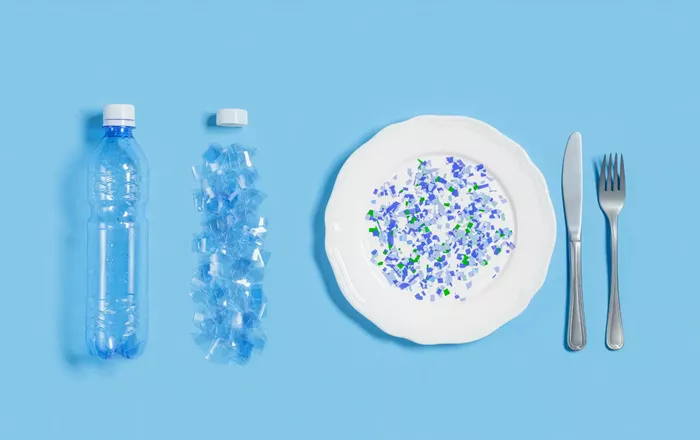Microplastics, microscopic particles resulting from the breakdown of plastic products, have become ubiquitous in the environment and are now found in various human tissues, including blood, organs, and even the brain. Studies have linked these particles to several health risks, such as endocrine disruption, heart disease, and increased risk for neurological conditions, including dementia.
Recent findings from the University of New Mexico highlight a 50% increase in plastic particles accumulating in the human brain over the past eight years, correlating with the growing environmental presence of plastic. Although the full impact of microplastics on human health is still being explored, researchers warn about the potential long-term effects.
Experts agree that while it may not be possible to fully avoid microplastics, there are measures individuals can take to minimize exposure.
How Microplastics Enter the Body
Microplastics enter the body primarily through ingestion and inhalation. They can be found in contaminated food, water, and air. For instance, seafood and drinking water are common sources of microplastic exposure, while plastic particles also infiltrate the air we breathe.
“Microplastics are in almost every tissue we’ve studied,” said Marcus Garcia, PharmD, RPh, from the University of New Mexico, emphasizing the widespread nature of the particles. Additionally, small enough to be inhaled or consumed, these plastics can eventually accumulate in organs and even in the brain, raising concerns about their potential role in neurological diseases.
Strategies for Reducing Exposure
Health experts suggest several practical ways to reduce exposure to microplastics:
Avoid Plastic Food Storage and Preparation: Plastic kitchenware, such as cutting boards and non-stick cookware, can shed microplastics into food. Switching to alternatives like cast iron or stainless steel cookware and glass or metal storage containers can limit exposure.
Opt for Natural Alternatives: When shopping for food or household items, choosing non-plastic packaging, such as glass jars or beeswax wraps, can significantly reduce microplastic contamination. For personal hygiene, switching to bamboo toothbrushes and silk floss is another effective measure.
Use Reusable Water Bottles and Filtration Systems: Bottled water has been found to contain microplastics, with some studies showing that one liter of bottled water may contain more than 200,000 plastic particles. Using a reusable water bottle and installing a water filter with a fine pore size can help minimize ingestion.
Reduce Plastic Clothing: Clothing made from synthetic fabrics like polyester and spandex release microplastics when washed. Choosing natural fibers and investing in microfiber-catching laundry filters can help reduce environmental contamination and limit microplastic ingestion through clothing.
Advocate for Change: Beyond personal efforts, experts encourage public activism. Advocating for better recycling systems and supporting legislation aimed at reducing plastic production are critical steps in mitigating the long-term health impacts of microplastics.
In conclusion, while completely avoiding microplastics may not be realistic, adopting these practices can significantly reduce exposure and potentially lessen health risks associated with this growing environmental concern.
Read more:
- Personalized mRNA Vaccine Shows Potential in Reducing Pancreatic Cancer Recurrence, Small Study Suggests
- Rising Healthcare Costs: Diabetes And Heart Disease Lead Spending Surge
- American Heart Association Launches Preventative Program For Complex Health Syndrome


